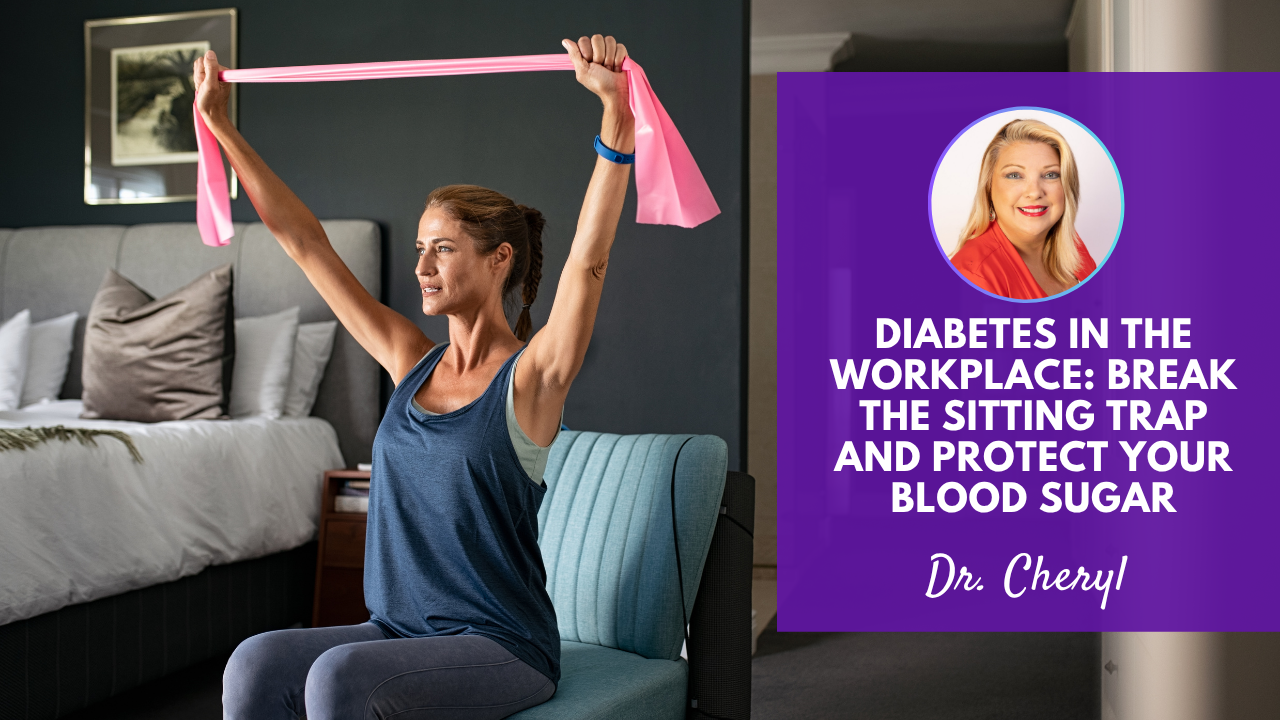
How Sensory Overload Elevates Stress & Your Blood Sugar And How to Protect Yourself
As we wrap up National Stress Awareness Month, I want to share with you how there’s one hidden factor affecting your stress levels and blood sugar that doesn't get nearly enough attention as it deserves: sensory overload.
When you’re living with diabetes and accustomed to a busy lifestyle, what you may not realize is that the constant noise, screens, clutter, and information overload around you can keep your nervous system stuck in "fight or flight" mode.
That overdrive state increases cortisol, triggers stress responses, and causes your blood sugar to rise even when you're not emotionally upset.
What is Sensory Overload?
Sensory overload happens when your brain receives more sensory input than it can process. This includes:
- Constant notifications from your phone
- Background noise, like traffic or TV
- Bright lights and screen exposure
- Physical clutter in your workspace or home
- Overexposure to digital content and social media
When your senses are overwhelmed, your body reacts as if you’re under stress, activating the sympathetic nervous system and triggering cortisol release. For people living with diabetes like me, you, your loved ones or clients, this means blood sugar spikes and increased insulin resistance.
How to Reduce Sensory Overload & Stabilize Stress and Blood Sugar
You can't avoid modern life, but you can create boundaries and pockets of sensory calm. Here's how:
1. Create a "Sensory Reset Zone": Designate one space in your home or office that is free of clutter, noise, and screens. This can be a corner, a chair, or even a cozy spot by a window.
What to do:
- Keep this space tidy and simple
- Use soft lighting or natural light
- Add calming elements like a plant, soft texture, or essential oil diffuser
- Spend at least 5 minutes a day in this space to calm your nervous system.
2. Take Micro-Digital Detox Breaks: Screen time overstimulates the brain, keeping you in stress mode. Build in short, intentional breaks from your devices:
What to do:
- Set a timer to step away from your phone every 90 minutes
- Leave your phone in another room during meals
- Schedule "screen-free" time 30 minutes before bed
- These small habits help your body shift out of stress and back into rest-and-digest mode.
3. Use Sound & Smell to Recalibrate Your Senses: Certain sounds and scents can signal safety to your nervous system and bring your body back to balance.
What to do:
- Listen to soft instrumental music or nature sounds while you work
- Diffuse calming essential oils like lavender or chamomile
- Step outside to hear birds or feel fresh air on your skin
- These sensory inputs activate the parasympathetic nervous system and help lower cortisol.
Real Client Results: How Reducing Sensory Overload Changed Stress & Blood Sugar
"I never connected my constant stress and blood sugar swings to how much noise and clutter was around me. When I started turning off notifications, decluttering my desk, and taking real breaks from screens, I noticed my afternoons felt calmer. My blood sugar numbers improved over time, and I wasn’t feeling so wired by the end of the day. I didn’t realize how much all that sensory noise was keeping me stressed."
— Daniel S., Coaching Client
What’s Next? Let’s Simplify Stress Management for You
Your environment plays a major role in your stress levels and blood sugar stability. But when you're busy, it's easy to overlook how much sensory overload is draining you.
That’s why I offer a complimentary Diabetes Wellness Connection Call designed specifically for busy people living with diabetes. In this private session, we’ll:
- Identify the hidden stress triggers in your environment
- Discuss your specific stress and blood sugar challenges
- Clarify simple, realistic next steps to reduce overwhelm and stay in control
it’s a clear starting point to help you move forward.
📅 Schedule your free call here
ABOUT THE AUTHOR

Dr. Cheryl
Dr. Ac., C.H., RDH
Dr. Holistic Studies, Dr. Acupuncture
Diabetes Wellness Strategist & Coach
Creator & CEO of Holistic Diabetes Solutions
8 X International Best-Selling Author
As a woman living with diabetes for over 30 years, Dr. Cheryl understands the journey firsthand. When she was diagnosed, she received the same outdated advice her grandmother was given for over four decades, who relied primarily on medication, suffered from deteriorating health and eventually lost her life to diabetes. Fueled by this experience, Dr. Cheryl was compelled to seek a better way. Through countless research studies and trials, she developed the winning holistic approach: the Diabetes Success System which merges traditional wisdom with today’s best holistic self-care practices. It has revolutionized diabetes management by providing a trusted way to maintain consistent and predictable healthy blood sugar levels.
_______________________
PROFESSIONAL DISCLAIMER
The material and content contained in this platform is for overall general diabetes health and education information only. It is not intended to constitute medical advice or to be a substitution for professional medical recommendations, diagnosis or treatment. All specific medical questions or changes you make to your medication and/or lifestyle should be discussed and addressed with your primary healthcare provider. Having the right mindset, doing the right movements at the right times of day, and eating foods that help keep blood sugar, insulin, and inflammation manageable can dramatically reduce your risk of the all-too-common complications of Diabetes, increase your energy levels and have you feeling your best every day.






